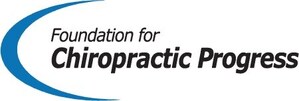SAN JOSE, Calif., Nov. 16, 2021 /PRNewswire/ -- More than half (53%) of young adults (ages 18-32) would be more willing to choose a doctor of chiropractic (DC) for treatment of neck or back pain instead of a medical doctor, such as a primary care doctor or an orthopedist, according to a recent survey of over 2,000 U.S. adults conducted online by The Harris Poll and commissioned by the Foundation for Chiropractic Progress (F4CP), a nonprofit dedicated to informing and educating the general public about the value of chiropractic care.
Choosing chiropractic care over a medical doctor for neck and back pain varied among age groups, employment, and region according to results from the F4CP/Harris Poll survey.
Key Findings
- By generation: as much as 54% of Gen Z (ages 18-24) and 52% of younger Millennials (ages 25-32) answered "doctor of chiropractic" to the question: If you were experiencing neck or back pain, would you be more willing to see a doctor of chiropractic (DC) or a medical doctor (e.g., primary care physician or orthopedist) for treatment?, compared to just 35% of Baby Boomers (ages 57-75).
- By employment status: Nearly half (48%) of employed Americans would be willing to seek care from a DC compared to only 39% of those who are not employed.
- By region: 49% of adults residing in the West would be more willing to choose a DC over a medical doctor for treatment of neck or back pain compared to 40% of adults residing in the Northeast.
"After more than two decades of the nation's opioid crisis, it is not surprising that younger Americans would choose effective, drug-free and non-invasive chiropractic care to manage neck and back pain and avoid risky and costly surgical approaches," said Sherry McAllister, DC, president of F4CP. "Not only is chiropractic care safer, but research has shown time and again that patients of all ages who visit a DC have fewer opioid prescriptions and less usage."
These studies include a 2020 analysis of health insurance claims that found patients with spinal pain who visited a DC and another primary care doctor had half the risk of filling an opioid prescription than those who did not receive chiropractic care. The risk reduction was even greater if the patient saw the DC within 30 days of first experiencing spinal pain.
Pain starts young
The F4CP/Harris Poll survey findings align with 2017 survey results from the Pew Research Center which showed that 53% of American adults ages 18 to 49 access non-traditional care, such as chiropractic, exclusively or in addition to pharmacologic approaches to care, which was a higher acceptance rate than older Americans.
It also aligns with findings from a 2020 F4CP study of Gen Z's approaches to chronic pain management which found that the majority of Americans ages 18 to 24 reported they first experienced chronic neck, shoulder or back pain when they were younger than 16. More than 63% of survey respondents reported being "somewhat" or "very" interested in chiropractic care while 17% said they had already received such care.
"We are very encouraged to see our youth seeking natural, drug-free care first," said Dr. McAllister. "Hopefully, the awareness of the effective, long-term pain relief and mobility benefits of chiropractic care will continue throughout their life not only to relieve neck and back pain, but also to focus on holistic wellness."
Employee preferences
In the F4CP/ Harris Poll survey, nearly half (48%) of employed Americans would be more willing to seek care for neck or back pain from a DC compared to only 39% of those who are not employed. This preference among employed Americans could be attributed to the growing acceptance among employers and health insurers to lower the barriers to chiropractic care by reducing co-pays or visit restrictions. As of late 2019, for example, members of certain employer-sponsored health plans from UnitedHealthcare pay no deductible or co-pay if they select chiropractic care or physical therapy for treatment of low back pain.
"As healthcare continues to evolve toward less-invasive, more holistic care methods focused on wellness versus illness, chiropractic care is well-positioned to continue this growth trend as a first-line care choice of workers across the U.S. and the world," said Dr. McAllister. "The F4CP/Harris Poll survey results are further evidence of this trend that members of the Foundation for Chiropractic Progress are at the forefront of."
Survey Method
This survey was conducted online within the United States by The Harris Poll on behalf of The Foundation for Chiropractic Progress between October 5-7, 2021 among 2,037 US adults ages 18+. This online survey is not based on a probability sample and therefore no estimate of theoretical sampling error can be calculated. For complete survey methodology, including weighting variables and subgroup sample sizes, please contact [email protected].
About the Foundation for Chiropractic Progress
A not-for-profit organization with over 29,000 members, the Foundation for Chiropractic Progress (F4CP) informs and educates the general public about the value of chiropractic care delivered by doctors of chiropractic (DC) and its role in drug-free pain management. Visit www.f4cp.org/findadoc; call 866-901-F4CP (3427).
SOURCE Foundation for Chiropractic Progress

WANT YOUR COMPANY'S NEWS FEATURED ON PRNEWSWIRE.COM?
Newsrooms &
Influencers
Digital Media
Outlets
Journalists
Opted In




Share this article